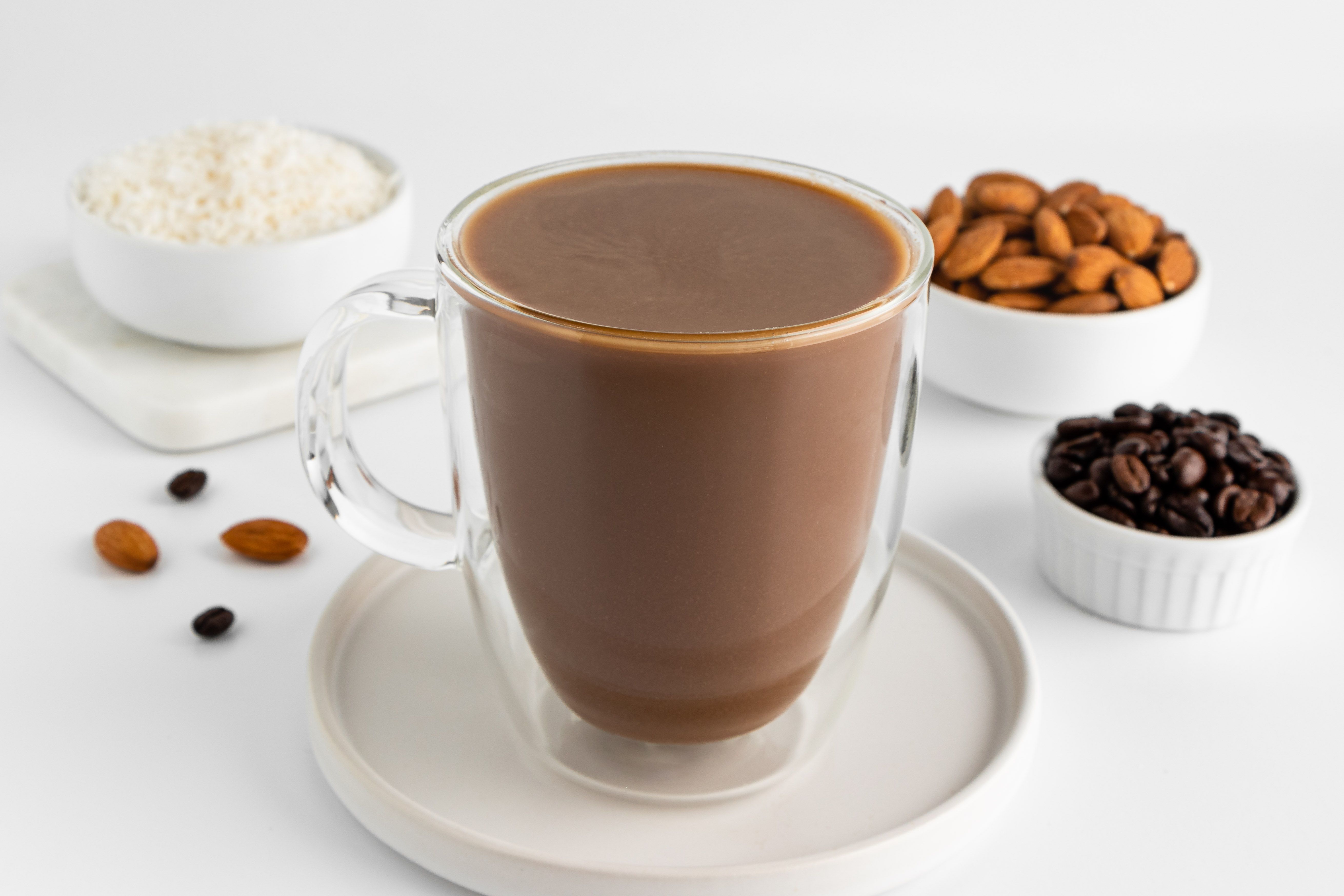
Ultimate Guide to Coffee & Plant-Based Milk Essentials
5 Minutes
With the recent launch of our new Almond Cow House Coffee, we're doing a spotlight on all things coffee, plant-based milk, and more!
Let's talk about coffee! Coffee is a universal language, and there are so many ways to enjoy it. Whether it be cold brew with a splash of oat milk, french press coffee with a heavy pour of cashew creamer, or just a simple shot of espresso…the possibilities are endless!
We're going to be answering all of your coffee-related questions, including how to make cold brew in the Almond Cow, which homemade plant-based milk is best to mix with coffee, why our Almond Cow coffee is unique, and more. Whether you're a novice coffee drinker or a java enthusiast…we're sharing helpful tips and takeaways for everyone.
How to Make Cold Brew in the Almond Cow
Cold brew is smooth, strong, and delicious. Because cold brew is never exposed to heat, it can have up to 70% less acidity and bitterness compared to hot coffee. Many people find that cold brew tastes much better than regular coffee (although you really can't beat a piping hot cup of joe from time to time)! It's so easy to make cold brew in your Almond Cow, but it does take time so make sure you're prepared for that. Check out the directions to make cold brew in your Almond Cow below.
Step 1
Fill the Almond Cow base to the MIN line with filtered water. Add ice to float the water to the MAX line.
Step 2
Place coarse ground coffee (don't use whole beans) into the filter basket. Attach the filter basket to the top of the Almond Cow and twist in the direction of the close arrow to secure it.
Step 3
Attach the top and let sit for 12 hours. DO NOT RUN THE MACHINE!
Step 4
Once your cold brew is ready, remove the Almond Cow top and detach the filter basket. Empty and rinse the filter basket.
If you want to take it one step further, you can make Cold Brew Milk in your Almond Cow. It's the perfect way to start your morning, so make a batch and store it in the fridge for a tasty and convenient pick-me-up. Check out the recipe here!
Which Homemade Plant-Based Milks Are Best for Coffee?
When it comes to plant-based milk, one of the most common complaints coffee drinkers have is how their plant milk tends to 'split' or 'curdle' when poured into coffee resulting in an unappealing appearance.
Our Milk Masters experimented in the Milk Lab and found that our Coconut Milk and Oat Milk recipes mixed best with coffee. They were also less likely to curdle when used in hot coffee than cold brew or refrigerated hot brew. However, Cashew Creamer, Almond Milk, CocoCash Milk, Soy Milk, or any of our other milk or creamer recipes are great options as well.
Another thing to note is that blending your coffee and plant-based milk in a blender or frother will result in a smoother consistency with less curdling. We recommend checking out this blog post to see which plant-based milks froth best!
What Makes Our Almond Cow Coffee Unique?
We’re excited to announce the launch of House Coffee - our very first Almond Cow coffee, chosen with homemade plant-based milk in mind. This Guatemalan Whole Bean Coffee is fair-trade and organic. Our House Coffee is unique as it was sourced and roasted specifically for plant-based milk, meaning it mixes well with homemade milk made in your Almond Cow.
Our milk masters sampled an extensive number of coffee options before landing on the one we chose. It's a perfectly balanced medium to dark roast with tasting notes of dark chocolate and toasted almonds.
The Almond Cow House Coffee is perfect for whichever way you like to enjoy your coffee, whether that's hot drip coffee, cold brew, espresso, and more! It’s especially delicious when mixed with any variety of homemade milk made in the Almond Cow, but our top recommendations for little to no curdling would be our Coconut Milk or Oat Milk recipes.
We hope this has been helpful and informative for you. Our biggest takeaway? Coffee and plant-based milk can definitely be friends. Everyone's taste differs, and it really all comes down to what flavors you enjoy the most!
What's your favorite way to enjoy your coffee? Leave us a comment below, and don't hesitate to reach out if you have any questions.
